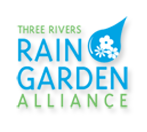Maintaining your rain garden
Mulching over.
Mulch is an important component to all gardens. It keep the soil moist which helps new plants get off to a good start and reduces your need to water in the early stages. It also helps to keep the weeds out. Apply a two to three inch layer of shredded hardwood mulch. Avoid using large-sized mulch (bark chips) — they float and will be rearranged every time it rains! Mulching after the second year will usually not be necessary except for aesthetic purposes.
Weeding out.
For the first year or two, you should weed your rain garden. Make sure you remove all the roots. You may find that weeds don't pop in the garden's second season. From that point on, the maturing native grasses, sedges, rushes, and wildflowers will nudge out the remaining weeds, leaving you with just the occasional weed here and there to worry about.
Cutting back.
You can remove dead plants in the fall, or leave them through the winter to provide wildlife cover and bird food. Depending on the size of your rain garden and the plants you have chosen, you can pull them out by hand, use a weed whacker, or mow them down. Then either leave the dead plant material to decompose in the garden or compost it nearby.
Keeping up.
Over the long haul, maintenance will include mulching to block weed growth and prevent erosion; adding compost material, which helps retain water and releases nutrients; and upkeep on the berm to replace any soil that's been lost to erosion or animal activity.
Adding on.
Your rain garden can continue to evolve from season to season. Not only can you expand its footprint, you can enhance its features beyond simply adding new plants--everything from benches to butterfly houses to bird nesting boxes.
